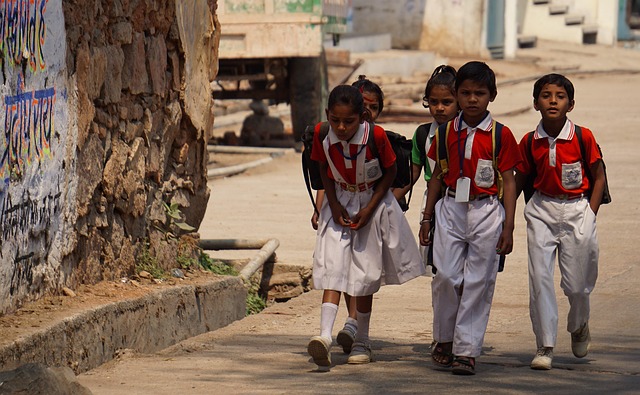The National Education Policy (NEP) 2020 marks a transformative shift in India’s educational landscape, aiming to modernize school education and make it more inclusive, equitable, and skill-oriented. With a focus on holistic development, technology integration, and multidisciplinary learning, the policy has introduced significant changes in the structure and objectives of school education. Here’s an analysis of its impact on Indian schools.
1. A New Structure: The 5+3+3+4 Model
One of the most notable changes introduced by NEP 2020 is the replacement of the traditional 10+2 structure with the 5+3+3+4 model.
- What It Means: The new structure includes five years of foundational education (ages 3–8), three years of preparatory learning (ages 8–11), three years of middle school (ages 11–14), and four years of secondary school (ages 14–18).
- Impact on Schools:
- Emphasis on Early Childhood Care and Education (ECCE) integrates pre-school education with formal schooling.
- Schools need to adapt infrastructure and resources for foundational learning and play-based curricula.
2. Multilingual Education
The policy strongly advocates for the three-language formula, emphasizing the importance of regional languages in early education.
- What It Means: Primary education will prioritize teaching in the child’s mother tongue or regional language, wherever possible.
- Impact on Schools:
- Schools will require trained teachers proficient in regional languages.
- Challenges may arise in balancing regional languages with English, particularly in urban and private schools.
3. Focus on Holistic Development
NEP 2020 emphasizes moving beyond rote learning to focus on critical thinking, creativity, and holistic development.
- What It Means: A shift from exam-centric education to skill development and conceptual understanding.
- Impact on Schools:
- Introduction of experiential and project-based learning methods.
- Greater emphasis on extracurricular activities, including sports, arts, and coding.
4. Vocational Training and Skill Development
To bridge the gap between education and employability, NEP 2020 introduces vocational training from Grade 6 onwards.
- What It Means: Students will gain hands-on experience in trades such as carpentry, gardening, and digital skills.
- Impact on Schools:
- Schools need to develop partnerships with local industries and skill providers.
- Investment in workshops, labs, and trainers for skill-based learning.
5. Integration of Technology
The policy envisions a technology-driven education system, integrating digital tools and online resources to enhance learning.
- What It Means: Adoption of AI, VR, and digital platforms in classrooms.
- Impact on Schools:
- Increased reliance on smartboards, tablets, and virtual labs.
- Greater focus on teacher training to incorporate technology into pedagogy.
- Expansion of digital infrastructure, particularly in rural areas.
6. Flexible and Inclusive Assessments
NEP 2020 moves towards continuous and comprehensive evaluation (CCE), reducing the emphasis on high-stakes exams.
- What It Means: Assessments will focus on application-based and skill-oriented evaluations.
- Impact on Schools:
- Introduction of AI-based tools to track student progress.
- Training teachers to design and implement diverse assessment methods.
7. Inclusion of Students with Special Needs
The policy places a strong emphasis on inclusive education, aiming to integrate children with special needs into mainstream classrooms.
- What It Means: Greater accessibility to learning for children with disabilities.
- Impact on Schools:
- Investment in special educators and assistive technologies.
- Development of inclusive curricula and infrastructure adjustments, such as ramps and sensory rooms.
8. National Curriculum Framework (NCF)
The NEP calls for a revised NCF to align with its vision, introducing lighter curricula with a greater focus on life skills and ethics.
- What It Means: Reduced syllabus burden and integration of topics like environmental education and emotional well-being.
- Impact on Schools:
- Teachers need to reorient lesson plans to align with the revised framework.
- Greater emphasis on value-based education and life skills.
9. Emphasis on Teachers’ Role
NEP 2020 recognizes teachers as the cornerstone of educational reform, proposing measures to enhance their training and working conditions.
- What It Means: Improved teacher training programs, performance incentives, and career growth opportunities.
- Impact on Schools:
- Schools must invest in continuous professional development for teachers.
- Stricter teacher qualification and accountability measures.
10. The Road Ahead: Challenges and Opportunities
Opportunities
- NEP 2020 encourages innovation in pedagogy, curriculum, and assessment, aligning Indian education with global standards.
- Technology integration opens up opportunities for personalized learning and access to global resources.
Challenges
- Implementing changes across diverse educational landscapes, particularly in rural areas, poses logistical and infrastructural challenges.
- Teacher training and resource allocation need significant focus to ensure uniform adoption.
Final Thoughts
NEP 2020 has set the stage for a forward-thinking education system that aligns with the demands of the 21st century. While its success depends on effective implementation and collaboration between policymakers, educators, and parents, the potential to transform Indian schools is immense.
As schools adapt to this new vision, they are not only shaping better learners but also nurturing individuals equipped with the skills, values, and knowledge to excel in a rapidly evolving world. For parents and educators alike, NEP 2020 offers a glimpse into the future of education—one that is inclusive, innovative, and empowering.


Leave a Reply